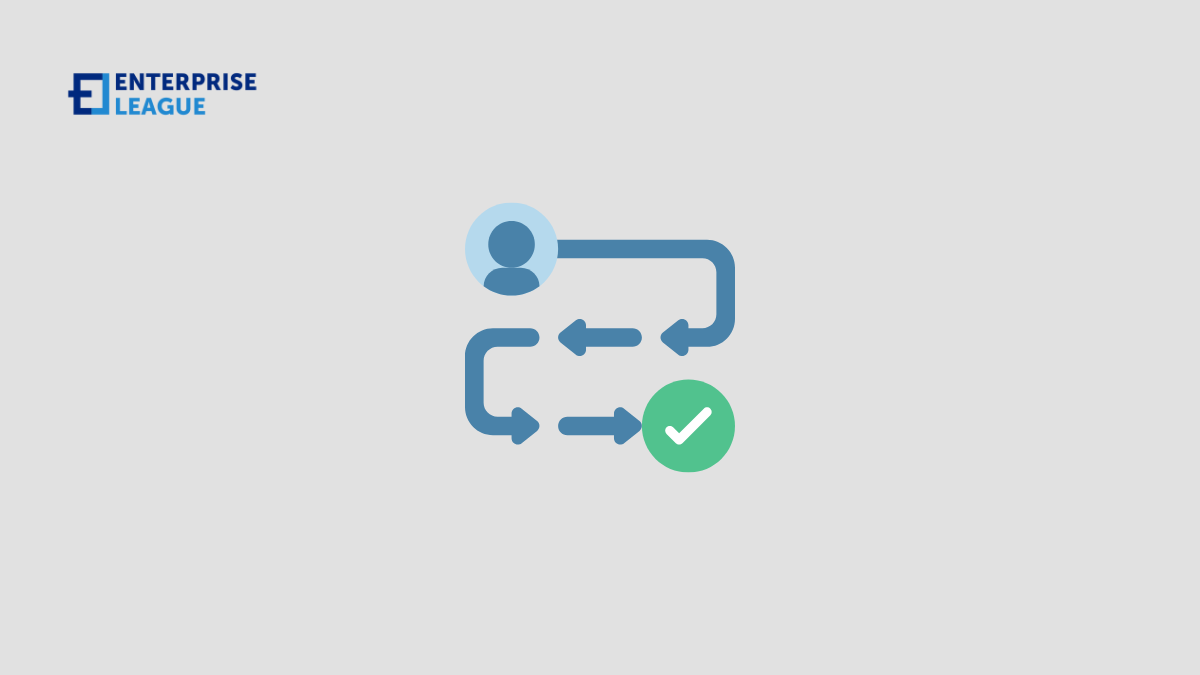E-commerce is hot! In 2021, e-commerce sales almost hit $5 trillion, and trends show that this number will only increase. Consumerism is ‘in’, and entrepreneurs are multiplying by the minute. So, if you want to stay ahead of the curve and gain leverage over your competitors, it’s time to take a look at your customer journey map.
Journey mapping is a strategy that guides the customer’s process during conversion, thus optimizing the buying process and creating efficient back-end operations for your team. Creating a positive customer experience is as important as the products themselves. It drives consumer loyalty and makes your business more appealing. With an effective strategy, your business will establish itself as a quality provider that values the needs of its customers.
The customer journey – from impression to conversion
Understanding the customer’s journey is a prerequisite to journey mapping.
Thanks to modern technology, consumers have the world at their fingertips. A simple Google search for “running shoes” will generate about four billion results.
Getting shoppers to land on your homepage is only half the battle. Turning impressions into conversions relies heavily on the customer’s experience. This process is a chronological journey with a beginning and an end. It starts with your business’s initial introduction and ends with a sale.
On digital platforms and e-commerce sites, the process is similar. When marketing to a typical demographic, the hunt will begin on a search engine. Proper SEO, content quality, and Google Ads are essential elements of your strategy to lure customers to your site.
First impressions are killer
According to Amazon, 88% of online consumers won’t come back to a website with a poor user experience, which, along with web design, creates the first impression of the source.
The same document shows that almost $1.6 trillion is lost due to the bad UX, calling this phenomenon The Trillion Dollar UX Problem. Improving the user experience of your website can increase revenue by almost 900%, according to an example in that Amazon investigation.
First impressions do last, and having a slow website with poor navigation and inadequate responsiveness of the design won’t create high-quality meet-cutes.
Starting your mapping strategy
The customer journey maintains a chronological order with every purchase. Mapping the journey involves the entire customer experience, but it doesn’t end at consumption. It also includes operations that are behind the scenes.
An effective method to start your mapping strategy is first to build a basic user story of how customers will interact with your business. For example, if you own a chain of supermarkets, your user story may look like this:
A family, to provide food for their home, creates a shopping list of groceries they intend to buy. They then drive to the local store, park their car in the store’s parking lot and enter the store. Using their shopping list, the family navigates the aisles picking out the items they have listed. They then go to the check-out, pay for their groceries, bag their groceries, load them into their car, and then head home. The family has successfully satisfied their need to provide food for their home.
With this example, we have a few questions to ask ourselves to ensure a positive customer experience throughout their journey:
- Is our supermarket easily accessible and does it offer enough parking space to satisfy customer traffic?
- Are products located in a logical manner and are easy to find?
- Have we conducted an analysis of ‘impulse-buys’ to strategically place them throughout the store, i.e., placing a small display of bananas in the breakfast food aisle or candy at the check-out lines?
- Does our store have express and self-check-out options to accommodate customer purchasing preferences?
- Do we offer payment methods that suit our customers’ needs?
- Could we offer curb-site pickup for customers who are crunched for time?
A successful online retailer will work according to similar guidelines. With a positive customer experience, the buyers will add more to their carts and be prompted to check out.
Once they provide billing and shipping information, they receive an order confirmation. Email updates with tracking information or newsletters with special offers might prolong the experience, but the customer journey usually ends with receiving the product or service, sometimes referred to in mapping as consumption.
The online journey of a consumer isn’t limited by what they do on your website, though. It starts with where they find it, what search queries they use, what their search intent is for each query, and whether you have optimized your pages for corresponding keywords.
Online interaction with your brand is crucial when mapping a customer journey, and you can start by understanding the first touch – how your potential customers might be searching for your services. For instance, the tool for keyword research by SE Ranking generates keyword suggestions while showing the demand (search volume) and also the SERP for the term. This way you see what your target audience is looking for, with what intent, and whether your website is relevant for these queries. With this tool, you can get not only crucial information on the key terms you already use but more suitable suggestions highlighting the most popular audience questions (long-tail keywords) and other relevant queries.
Customer journey mapping in three simple steps
The customer’s experience is a sequential procedure that plays out on the front-end of a business. Customer journey mapping provides a chance for companies to put themselves in the public’s shoes in order to reevaluate how they deliver service.
Mapping aligns expectations and gives companies a fresh perspective solidifying an understanding of the target demographic. All departments will benefit from mapping whether or not they have direct contact with the consumer.
Most journey maps resemble flow charts or timelines with multiple layers to represent various phases. These maps can follow any design or format that works for your company.
If you’re at a loss of how to start the mapping process, refer to the user-story example above which adds a hint of adventure and excitement to the charts.
Identifying customer activities and emotions
The first step of journey mapping is identifying the customer experience, which you are now familiar with.
1) Create a timeline that includes all stages of the buying process. It’s important to consider the various activities a customer can take part in while interacting with your company
2) Monitoring all activity that can take place on your platform is an important part of protecting your business from liability issues and inconsistent branding.
3) You also need to analyze consumer emotions. Think about the customer’s experience and how they may feel as they progress through each step of the process. Negative emotions, such as frustration and confusion, lead to low conversion rates.
A landing page that is too busy or overwhelming, might evoke negative emotions.
Many marketing teams use chat boxes on homepages. Still, some customers find this annoying, especially if they have to exit the box each time they enter a new tab.
On a sales floor, a customer might be irritated if employees are too pushy when offering help. Other visitors may look at the same amenity and be glad to receive the assistance.
There are a number of tools that track users’ emotions in their feedback, mentions, etc. These are Talkwalker, Repustate, Lexalytics, and others. Another tool, Hotjar, helps to spot where users bounce – that pages and sections may bring negative emotions to users.
Companies have to consider the negative emotions buyers may face so that they can be proactive in dealing with dissatisfied customers. Anticipating customer emotion in a journey map can help corporations design models that positively impact people and profits.
Thorough maps help employees deliver consistent and appropriate customer service that is aligned with company standards. Journey maps should take into account the best and worst-case scenarios that might occur during the consumer experience.
Front-end procedures and SEO implementation
Front-end operations are designed to have a positive impact on sales and clientele. These procedures guide the customer’s path from impression to conversion. To create a brilliant front-end flow, consider the channel of communication you will be conducting business through. Also, answer the following questions:
- Are you conducting sales through Facebook Marketplace?
- Do you have retail space for shoppers to visit in person where they will be interacting with sales associates?
- Are they visiting a landing page and buying directly from your website?
Each of these factors impacts the customer journey.
SEO is especially important at this stage because those tools help generate sales and gather data about first impressions and flow rates. If the journey starts with a search engine, build your site around relevant keywords.
Pay attention to snippets that appear along with your landing page. These are the buyer’s first impressions of your company. Snippets must contain relevant keywords that would be present in a customer’s search entry. Content on your website should be directly related to keywords as default snippets are generated from site metadata.
Ranking higher in search requires effective strategies that lead to higher SEO scores. Search engine bots have become quite advanced and are specifically designed to filter out sites that offer meaningless or misleading content. Furthermore, bots are now able to analyze how user-friendly a site is, and rank sites accordingly. Aspects such as page load speed, pop-ups, and time spent on your site all contribute to user-friendliness.
As you see, customer journey mapping helps businesses adopt a better understanding for the consumers they rely on, and combined with SEO, it helps better analyze the demographic they are marketing to. Predicting how conversions and interactions may play out will help you design an effective front-end operation.
Back-end operations and supporting services
Traditionally, shoppers have the luxury of being unaware of back-end processes. With a few clicks and barely a second thought, anyone can simply receive their purchases without thinking about how their orders made their way to them.
E-commerce sites have to deal with digital inquiries, billing, shipping, and returns – all of which happens on the back-end.
When creating this portion of your chart, consider what needs to happen in order to fulfill an order. Supporting services like Shopify, ShipStation, and FedEx assist companies on the back-end of business.
Maps help employees understand their duties based on where the customer is within their journey. If a customer walked into a retail store to make a return, front-end operations would include conducting the return transaction. Back-end operations would include updating the inventory system, re-shelving the item, or marking it as damaged for the claims department.
Conclusion
Customer journey mapping helps companies optimize the end user’s experience. It establishes a unanimous understanding of the customer, even for those working on the back-end of the business. Don’t mistake the journey for the map. Remember that the customer experience is only one part of the entire diagram.
Front-end and back-end operations are just as important to flesh out as the buying process. Design a path to customer satisfaction that integrates all aspects of your business model. Leave no employee or impression behind, and prepare to convert in the most effective way possible with a customized customer journey map.
More must-read stories from Enterprise League:
- The golden rules you need to build a steady buyer-seller relationship.
- Learn how practising gratitude can help your business grow.
- 10 ways you can start earning money with some trending small business ideas.
- These are the must-have apps you’re going to need in 2023 if you’re an entrepreneur.
- 15 virtual networking events to get you back in the game.
Related Articles
What Are the Top-Rated Fuel Cards for Businesses Operating Nationwide
Fuel expenses can eat into operational costs and profits if left unchecked. The bigger the fleet a company has, the more significant the loss. Specialized fuel cards emerge as a viable solution to boosting fuel savings, security, and streamlining expense management....
How do I reserve a space for a trade show in Pennsylvania
Trade shows are excellent business opportunities. Your upcoming event should occur in a space big enough to hold all participating brands while leaving room for visitors. Learning how to reserve a space for a trade show in Pennsylvania will help you find the best...
What Are the Best Event Venues for Corporate Meetings?
Finding the perfect event venue for your corporate meetings requires careful consideration of location, amenities, accessibility and reputation. The best venues provide excellent audio-visual capabilities, flexible meeting spaces, and professional decor options to...
What Are the Top-Rated Fuel Cards for Businesses Operating Nationwide
Fuel expenses can eat into operational costs and profits if left unchecked. The bigger the fleet a company has, the more significant the loss. Specialized fuel cards emerge as a viable solution to boosting fuel savings, security, and streamlining expense management....
How do I reserve a space for a trade show in Pennsylvania
Trade shows are excellent business opportunities. Your upcoming event should occur in a space big enough to hold all participating brands while leaving room for visitors. Learning how to reserve a space for a trade show in Pennsylvania will help you find the best...






